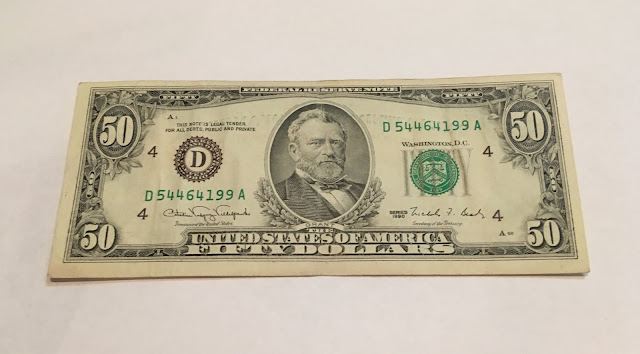It's not fake!
Today's topic will be older United States currency: Series 1963 to 1995.
From Series 1963 until Series 1988A, every single United States banknote did not have any security markings, such as a watermark, security strip, or micro printing. As a result, the U.S government recently began withdrawing such notes following concerns about counterfeiting. With Series 1990, the Bureau of Engraving and Printing introduced new banknotes into circulation with a security strip, and notes that had a security strip were of the denomination $10 and above. Soon after, with the introduction of the 1996 series for each denomination of US currency (other than the $1 note and $2 note), the older 1960s-1990s paper money series was quickly forgotten. These notes are still legal tender, although they can be exchanged for newer currency at any bank upon request. Since older banknotes have not been equipped with some of the more sophisticated anti-counterfeiting technology, it seems to be harder to authenticate them.
The most reliable ways to tell if an older note (pre-1990) is real are:
-To look for red and blue fibers scattered throughout the note
-To check the paper quality (if the paper seems too thin or too thick, as well as the overall texture- genuine currency has a distinct surface)
-Raised printing on newer, crisp bills




Comments
Post a Comment